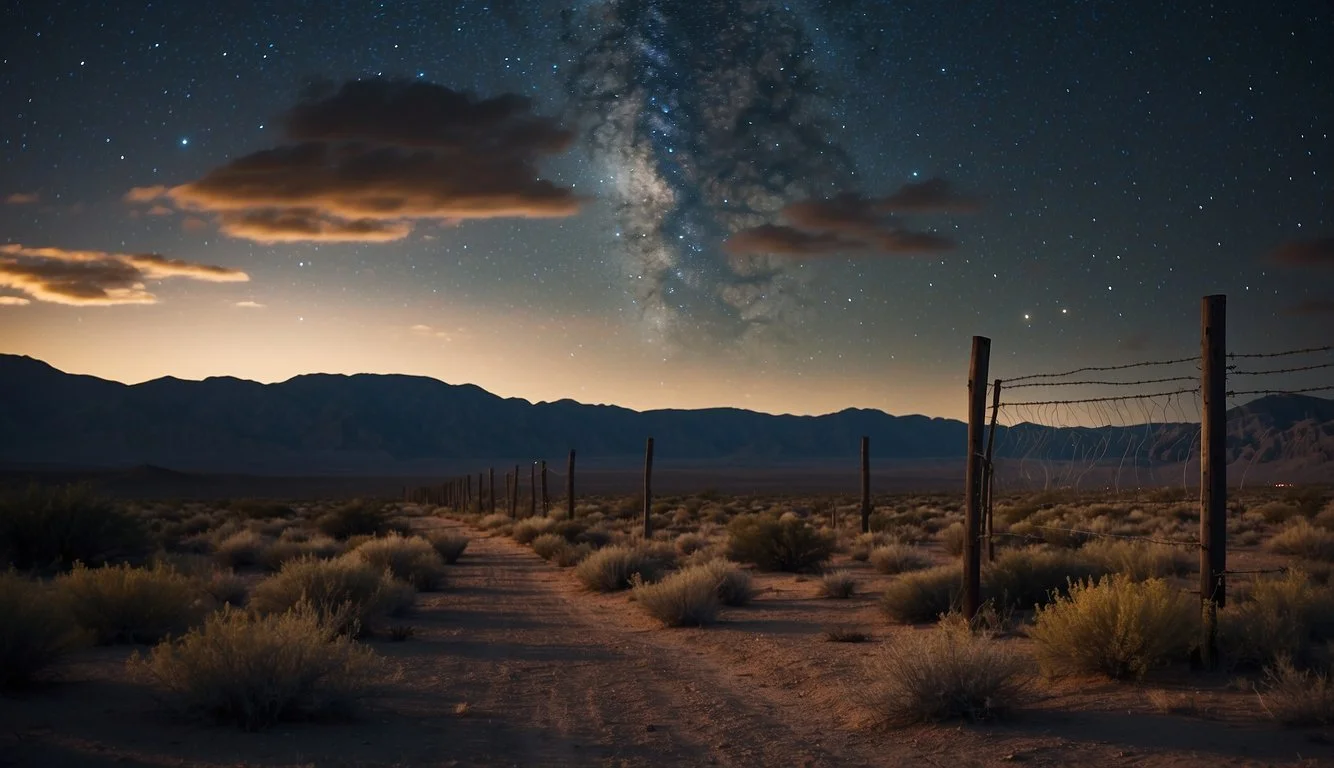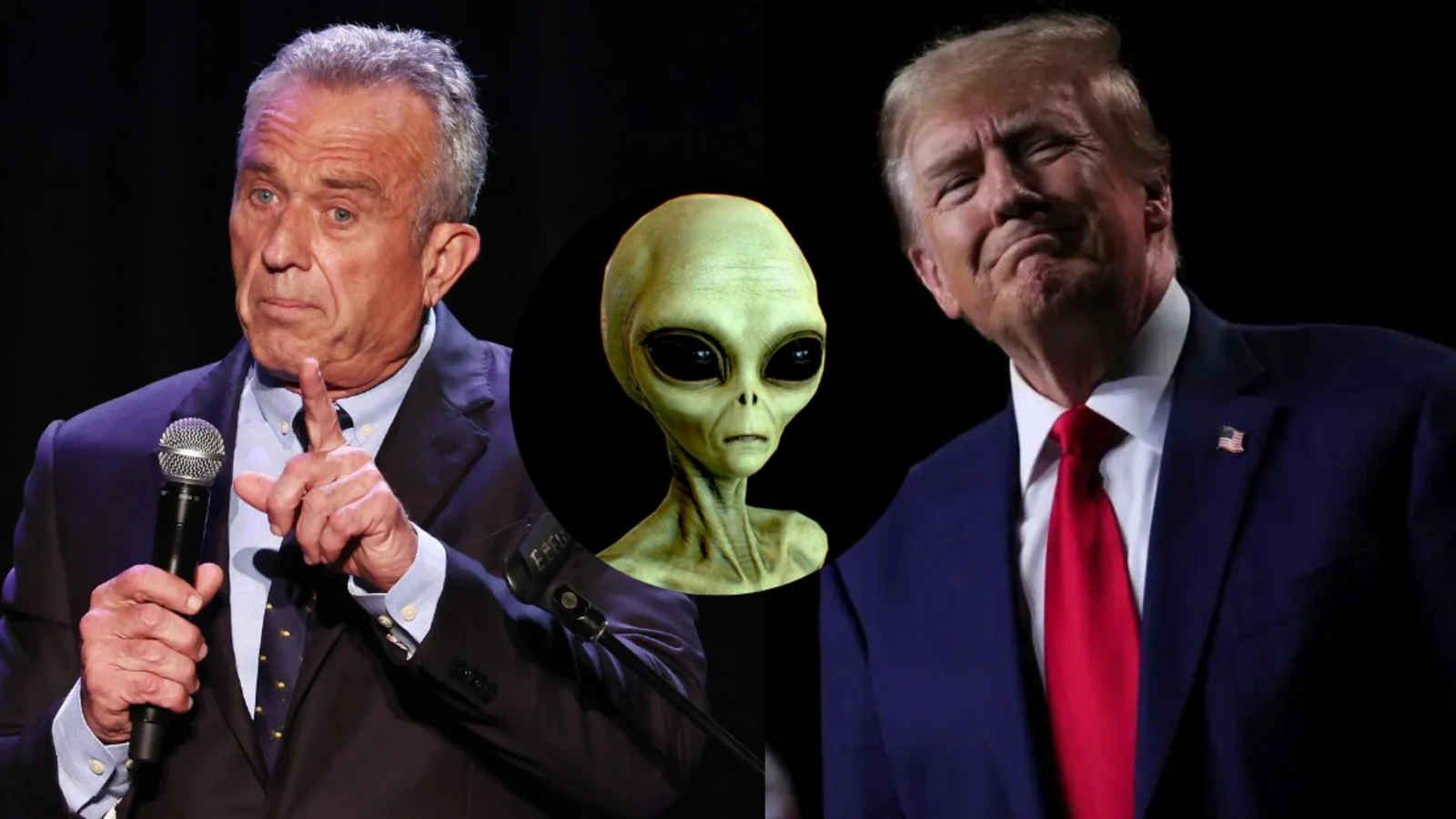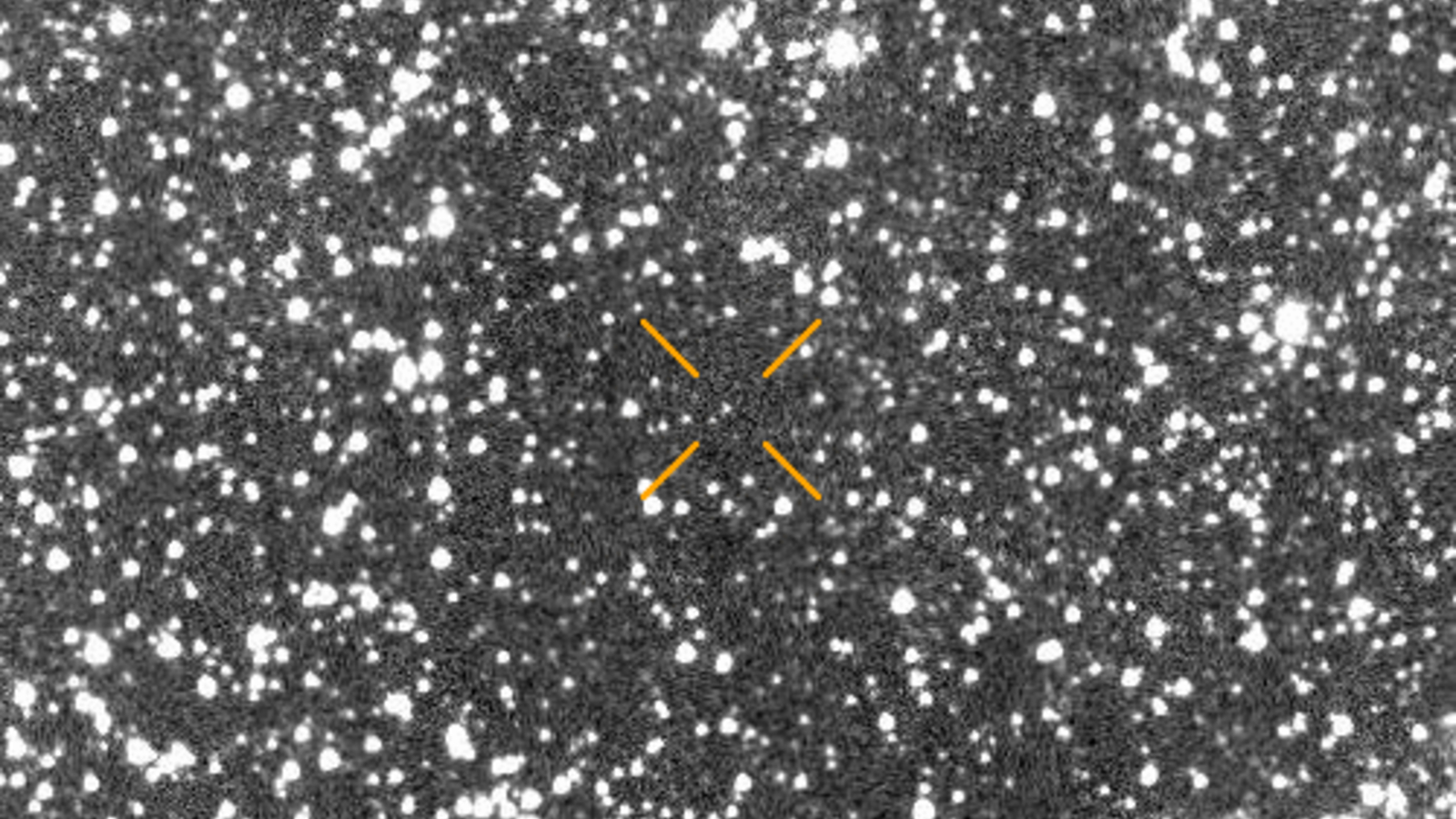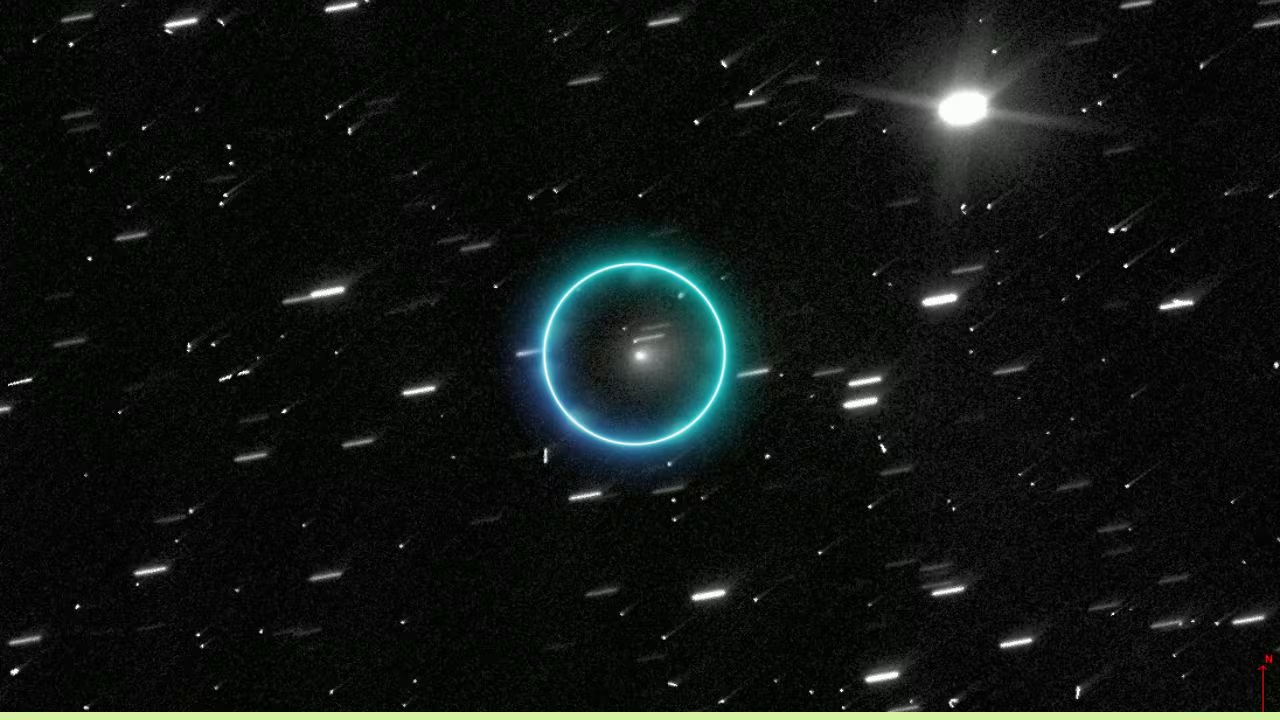The Nevada desert, a vast and desolate expanse of sun-scorched earth, has long captivated the imagination of millions worldwide. Its barren landscapes, punctuated by jagged mountains and endless horizons, seem to whisper secrets of the unknown. At the heart of this mystique lies Area 51, a remote military installation shrouded in secrecy and synonymous with tales of extraterrestrial visitors, unidentified flying objects (UFOs), and ghostly apparitions. For decades, this patch of desert has been the epicenter of speculation, conspiracy theories, and cultural fascination, drawing adventurers, skeptics, and believers alike to its dusty trails. But what lies beneath the Nevada desert? Are we dealing with aliens, UFOs, ghosts, or something far more terrestrial yet equally intriguing? This exploration delves into the history, cultural impact, and scientific inquiries surrounding Nevada’s enigmatic desert, unraveling the threads of myth and reality that have woven this enduring mystery.
The Birth of a Legend: Area 51 and Its Origins
Area 51, officially known as Homey Airport or Groom Lake, is a highly classified detachment of Edwards Air Force Base located in the remote Nevada desert, approximately 120 miles northwest of Las Vegas. The base, which spans a rectangular area of 6 by 10 miles within the larger “Groom box” of restricted airspace, was established in 1955 during the Cold War. Its primary purpose was to serve as a testing ground for advanced military aircraft, including the U-2 spy plane, the A-12 Oxcart, the SR-71 Blackbird, and later the F-117 Nighthawk stealth fighter. The secrecy surrounding these projects, coupled with the base’s inaccessibility, laid the groundwork for its transformation into a cultural phenomenon.
The U.S. government did not officially acknowledge Area 51’s existence until 2013, when declassified CIA documents confirmed its role in testing covert aircraft. This belated admission only fueled speculation that the government had been hiding more than just experimental planes. The lack of transparency, combined with the desert’s isolation, created a fertile ground for rumors of extraterrestrial activity. As early as the 1950s, sightings of strange, high-flying objects—later identified as U-2 planes reflecting sunlight at altitudes above 60,000 feet—sparked reports of UFOs. These sightings, often reported by commercial pilots and air-traffic controllers, were funneled to the Air Force’s Project Blue Book, a program tasked with investigating UFO phenomena. While the project dismissed most sightings as misidentified aircraft, the secrecy surrounding Area 51 ensured that public curiosity only grew.
The Cold War and the Seeds of Conspiracy
The Cold War era, marked by intense rivalry between the United States and the Soviet Union, was a time of paranoia and technological secrecy. Area 51’s role in developing reconnaissance aircraft like the U-2, which flew at unprecedented altitudes to spy on Soviet territory, required absolute confidentiality. The U.S. government went to great lengths to protect these projects, including fostering misinformation to divert attention from their true nature. One notable example, as revealed by a Wall Street Journal report, involved an Air Force colonel in the 1980s who was ordered to infiltrate a bar near Area 51 and distribute doctored photos of “flying saucers.” This deliberate misdirection was designed to obscure the testing of advanced aircraft by fueling alien conspiracy theories.
Such tactics were not isolated incidents. The All-domain Anomaly Resolution Office (AARO), established by the Department of Defense in 2022 to investigate unidentified aerial phenomena (UAPs), later uncovered evidence that the Pentagon had occasionally amplified UFO myths to conceal black-budget defense projects. Dr. Sean Kirkpatrick, AARO’s inaugural director, reviewed decades of military files and discovered instances where UFO stories were deliberately seeded. One such case was Project Yankee Blue, an internal hoax in which Air Force recruits were told of a fictional unit studying alien aircraft. These efforts, while effective in maintaining secrecy, inadvertently created a cultural juggernaut that the government could no longer control.
The Roswell Connection: A Catalyst for Alien Lore
The mythology surrounding Area 51 is inextricably linked to the 1947 Roswell Incident, a pivotal event in UFO lore. In July 1947, a rancher near Roswell, New Mexico, discovered unusual debris on his property. The U.S. Army Air Forces initially announced that they had recovered a “flying disc,” sparking widespread excitement. However, the military quickly retracted the statement, claiming the debris was from a weather balloon. This reversal, coupled with the secrecy of the Cold War, gave rise to theories that the government had recovered an alien spacecraft and its occupants, which were allegedly transported to Area 51 for study.
In the 1980s, the Roswell Incident was reignited by UFO researchers like Charles Berlitz and Bill Moore, whose book The Roswell Incident argued that an extraterrestrial craft had crashed while observing nuclear weapons tests in the New Mexico desert. Witnesses, including retired Air Force officer Jesse Marcel, claimed the debris was of extraterrestrial origin, and subsequent accounts introduced tales of alien autopsies and reverse-engineered technology. While the U.S. Air Force later clarified that the debris was from Project Mogul—a classified program to monitor Soviet nuclear tests—the Roswell narrative had already taken root, cementing Area 51’s reputation as a hub for alien secrets.
Bob Lazar and the Rise of Modern UFO Mythology
The Roswell Incident laid the foundation, but it was Bob Lazar’s 1989 television appearance on Las Vegas station KLAS that propelled Area 51 into the global spotlight. Lazar, claiming to be a physicist who worked at a secretive facility called “S-4” near Area 51, alleged that he was tasked with reverse-engineering alien spacecraft. He described nine flying saucers powered by an element called “115” and claimed the government possessed extraterrestrial technology. Despite inconsistencies in his academic and professional credentials, Lazar’s story captivated audiences and inspired a wave of UFO enthusiasts to flock to the Nevada desert.
Lazar’s claims were echoed by others, including a 71-year-old mechanical engineer interviewed in the 1996 documentary Dreamland, who claimed to have worked on a “flying disc simulator” based on a crashed alien craft in the 1950s. He also spoke of collaborating with an extraterrestrial being named “J-Rod,” described as a telepathic translator. While these accounts lack corroborating evidence, they have become cornerstones of Area 51’s mythology, fueling speculation about underground facilities, alien technology, and government cover-ups.
Cultural Impact: From Sci-Fi to Pop Culture Phenomenon
The allure of Area 51 extends far beyond conspiracy theories, permeating popular culture and shaping how society perceives the unknown. The 1940s and 1950s, a golden age for science fiction, saw an explosion of UFO-related media, driven by Cold War anxieties and the dawn of the space age. Films like Earth vs. the Flying Saucers (1956) and comics like There Are Martians Among Us (1962) reflected fears of extraterrestrial invasion and government secrecy. These narratives, rooted in the cultural zeitgeist, found a natural home in Nevada’s desert, where the real and the imagined blurred.
Roswell, New Mexico, capitalized on its UFO legacy, transforming into a tourist destination with the International UFO Museum and Research Center, which attracts 90,000 visitors annually. Nevada followed suit, embracing its extraterrestrial reputation. State Route 375, a 98-mile stretch near Area 51, was officially designated the “Extraterrestrial Highway” in 1996, complete with alien-themed attractions like the Little A’Le’Inn in Rachel, Nevada, and the Alien Research Center in Hiko. These sites, along with the Area 51 Alien Center and its extraterrestrial-themed brothel, cater to tourists seeking a glimpse of the otherworldly.
The Storm Area 51 Phenomenon
In 2019, Area 51’s cultural prominence reached new heights with the viral “Storm Area 51, They Can’t Stop All of Us” Facebook event. Created by college student Matty Roberts as a joke, the event invited people to “run into Area 51 on foot to see them aliens.” Over a million people expressed interest, prompting the U.S. Air Force to issue warnings against trespassing. While the planned “invasion” fizzled, it evolved into a peaceful gathering called Alienstock, with music festivals and UFO enthusiasts converging on Rachel and Hiko. The event underscored Area 51’s status as a global symbol of curiosity and rebellion against secrecy.
“It’s evolved into a peaceful gathering, a sharing of life stories,” said Cayla McVey, a UFO enthusiast with an alien tattoo, reflecting on the Alienstock event.
Ghosts and Other Paranormal Tales
Beyond aliens and UFOs, the Nevada desert is steeped in tales of ghosts and supernatural phenomena. The region’s history as a mining hub in the 19th and early 20th centuries left behind abandoned towns and eerie landscapes that inspire stories of restless spirits. Ely, Nevada, 180 miles north of Area 51, is considered a UFO hotspot but also boasts paranormal activity. A 1952 incident near Ruth, Nevada, allegedly involved a UFO crash with 16 alien bodies, though some accounts attribute the event to ghostly apparitions or misidentified military experiments.
In a 1966 ethnographic interview from the Tending the Commons collection, Howard Miller described a strange light he saw while hunting near Ely: “All at once it was daylight, and I looked up to see what happened. There was a light about that big, going up, drifting up the hill. When I looked and seen it just faded out.” Miller, a former Marine, insisted it was not an airplane, fueling speculation of a ghostly or extraterrestrial presence.
The Haunted Nevada Landscape
Nevada’s ghost towns, such as Rhyolite and Goldfield, are notorious for paranormal activity. Visitors to these sites report unexplained lights, disembodied voices, and apparitions, often linked to the region’s violent mining history. The Daily Star recounted a writer’s experience in a Nevada ghost town, where the supernatural felt more tangible than UFOs: “It was a stay at the state’s ‘liveliest ghost town’ where I got a taste of the supernatural and paranormal.” These stories, while less sensational than alien conspiracies, add another layer to Nevada’s mystique, blending the eerie with the extraterrestrial.
Scientific Skepticism and the Search for Truth
While the Nevada desert inspires wonder, scientists remain skeptical of extraterrestrial claims. Astronomer Carl Sagan, known for his work with SETI (Search for Extraterrestrial Intelligence), advocated for rigorous skepticism in his book The Demon-Haunted World. Sagan argued that UFO sightings often stem from psychological or social phenomena, such as misidentified aircraft or cultural anxieties. He dismissed the likelihood of alien visitors, noting the lack of empirical evidence, yet encouraged speculative imagination balanced by critical inquiry.
The Pentagon’s AARO has similarly found no evidence of extraterrestrial life. Its 2024 report documented hundreds of UAP sightings but attributed most to balloons, birds, satellites, or classified military projects. A notable case involved a 1967 incident at a Montana nuclear base, where Captain Robert Salas claimed a UFO disabled ten nuclear missiles. AARO later suggested the event was caused by a failed electromagnetic pulse test, not aliens, highlighting how misinformation can perpetuate myths.
SETI and the Broader Search for Life
SETI’s ongoing efforts to detect extraterrestrial signals focus on radio telescopes, not Nevada’s desert. Seth Shostak, a SETI astronomer, emphasized that any advanced civilization capable of interstellar travel would be unlikely to crash on Earth: “The likelihood that they would be incompetent enough to crash land anywhere on the planet is absolutely zero.” This perspective underscores the scientific community’s preference for methodical exploration over sensational claims.
Music and the Alien Aesthetic
The Nevada desert’s mystique has also inspired music, from David Bowie’s Starman to modern electronic artists like The Glitch Mob, whose album Drink the Sea evokes otherworldly landscapes. The 2019 Alienstock festival featured electronic and indie music, reflecting the desert’s association with cosmic themes. Bands like Muse, with songs like Exo-Politics, draw directly on Area 51 and UFO conspiracies, blending sci-fi aesthetics with rock and electronica. This musical connection reinforces Nevada’s role as a cultural touchstone for exploring the unknown.
Conclusion: A Desert of Infinite Possibilities
The Nevada desert, with Area 51 at its heart, remains a paradox—a place where military secrecy, cultural imagination, and scientific inquiry collide. While declassified documents reveal that UFO myths were often deliberate distractions to protect classified projects, the allure of aliens, ghosts, and the paranormal persists. The desert’s vastness, coupled with its history of secrecy and supernatural tales, ensures that it will continue to inspire curiosity and creativity. Whether the truth lies in advanced aircraft, psychological phenomena, or something yet undiscovered, Nevada’s enigma endures, inviting us to question what lies beyond the horizon.













0 Comments